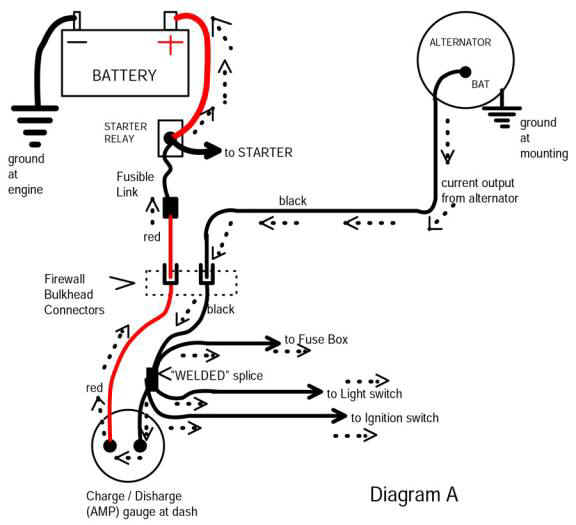Yes. Read the MAD link I posted earlier, which has a good explanation of the basics of the battery feed/ bulkhead/ charging wire and ammeter circuit
There are several main failure points:
The fuse link
the bulkhead connector
the ammeter connections or the ammeter itself
the in harness factory welded splice
the connector at the ignition switch
the ign switch itself
So far as accessories, problems in the fuse panel, loose / rusted/ corroded fuse clips or even "partially" blown fuses, IE which have been hot in the end caps due to poor connections
Once again, the MAD link:
http://www.madelectrical.com/electricaltech/amp-gauges.shtml
Useable but sometimes incomplete diagrams:
http://www.mymopar.com/index.php?pid=31
http://www.mymopar.com/downloads/1968/68DartA.jpg
http://www.mymopar.com/downloads/1968/68DartB.jpg
Our own factory shop manual download thread. Some of the earlier posted links are broken, have been reposted further down:
http://www.forabodiesonly.com/mopar/showthread.php?t=132309&highlight=manual%2C+download
Closest we have to your 68 is this 69 manual which should be very close
[ame]http://www.abodyjoe.com/pictures/Misc.%20car%20info/69%20dodge%20service%20manual.pdf[/ame]
Simplified diagram from the MAD article:
Follow the red from the battery, starter relay, fuse link and to the bulkhead. Notice that it only goes to one place --- one side of the ammeter. If you can get a clip lead up there (with the ground unhooked for safety) and then hook the batttery back up, compare voltage at the battery to the voltage at your ammeter terminal with loads turned on, such as head lights. You should have very little drop, only about .3V (three tenths of a volt maximum)
Now follow the diagram through the ammeter and to the "welded splice"
Yes there can be bad connections at the ammeter or problems in the ammeter itself.
The welded splice is in the black ammeter wire, a few inches away from the ammeter, taped up in the under--dash harness. There is only one way to inspect it, and that is to cut / untape the harness slowly down from the black ammeter wire until you find it. These CAN AND DO fail in rare cases
This splice feeds different things in newer cars, but generally....................
branches off to headlights (only, not park / tail) power to the headlight switch
feed to the hot buss in the fuse panel
feed to the ignition switch
one/ two other things, depending on model.
Notice that NONE of this is fused except for the fuse link, which is damn poor protection, sometimes harnesses burn up before the fuse link pops!!!

